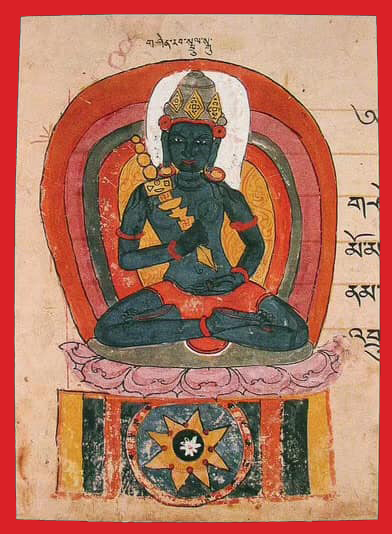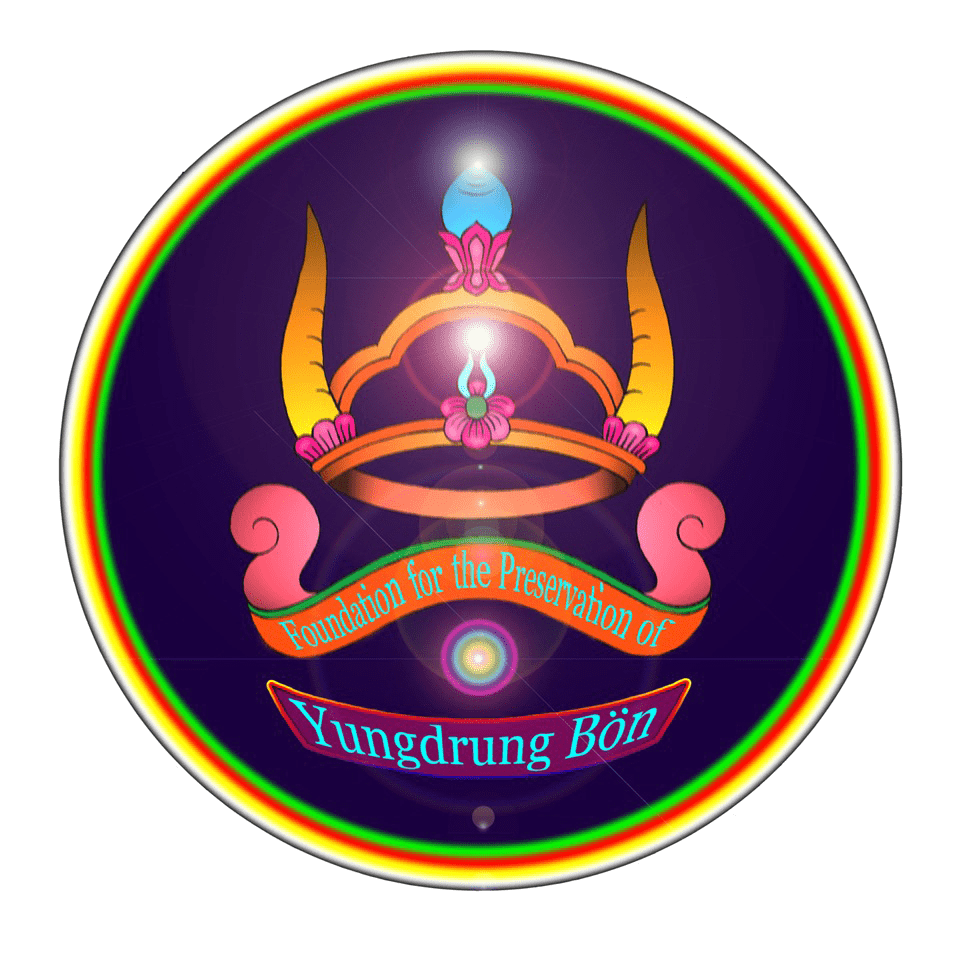Tönpa Shenrab Miwoche’s 18,039th Anniversary

Today, the fifteenth day of the twelfth Tibetan month, we celebrate the 18,039th anniversary of the First Deed of Yungdrung Bön’s Buddha Tönpa Shenrab Miwoche (Tib. Ston pa Gshen rab Mi bo che) – the Deed of Birth (Tib. Sku bltams-pa’i mdzad-pa).
Tönpa Shenrab – whose original name was Mura Tahen (Tib. Dmu-ra ta-han) – was born on the fifteenth day of the first month of Spring (Tib. me-stag-gi zla-ba) in the country of Olmo Lungring (Tib. ‘Ol-mo lung-ring), the central region of the larger country of Tagzig (Tib. Rtag-gzigs/Stag-gzig). It was in the Wood Male Mouse Year i.e. in 16,017 BC according to traditional Bönpo Chronology (Tib. Bstan-rtsis).
One may rightly ask: Why do we celebrate this anniversary in the twelfth month when it is said that Buddha was born in the first lunar month? The answer is: It is because this date is according to the ancient Zhang Zhung and Old Tibetan calendar which comes one month earlier than the current official Tibetan calendar calculated according to Hortsi or Horda – the Mongolian system (Tib. hor-rtsis / hor-zla) – that was introduced to Tibet in the thirteenth century by Chögyal Phagpa (Tib. Chos-rgyal ‘phags-pa), the Sakyapa (Tib. Sa-skya-pa) hierarch and tutor of the Mongol ruler of China Khubilai Khaan. The new calendar was mainly introduced as a political move to align the Tibetan and Chinese calendars so that the New Year would start on the same day of the same lunar month.[1]
Dates for Tönpa Shenrab’s life are calculated on the basis of the traditional interpretation of one shen-year (Tib. gshen-lo) being equal to one hundred human years. As it is said that Tönpa Shenrab Miwo lived 82 shen-years, his whole lifespan according to this reckoning is 8,200 years. But there are several other views on the date of Tönpa Shenrab’s birth, and his lifespan:
- For example, another dating for Tönpa Shenrab Miwo’s life was suggested by Chögyal Namkhai Norbu in his book Drung, Deu and Bön. [2] He traces the date for Tönpa Shenrab’s birth to 1917 BC and so, according to this dating and using a lifespan of 82 human years, Tönpa Shenrab’s parinirvana (Tib. mya-ngan las-‘das-pa) should have occurred in 1835 BC. This dating, however, is not accepted by Bönpo scholars I consulted;[3] they consider it to be too late.
- Khenpo Tenpa Yungdrung suggested another method of determining dates for Tönpa Shenrab. He maintains that the date of Tönpa Shenrab’s parinirvana (7817 BC) is certain and that it is this date which should be used as a historical reference. Furthermore, he does not rule out calculating this Buddha’s lifespan as 82 human years rather than 82 shen-years.[4] So according to this calculation, we add 82 to 7817 which gives us 7899 BC as the year of Tönpa Shenrab’s birth.
During his life, Shenrab Miwo manifested The Twelve Deeds of Buddha (Tib. Mdzad-chen bcu-gnyis). Here is a brief summary of this traditional account:
[1] Berzin, Alexander. “An Introduction to Tibetan Astronomy and Astrology.” The Tibet Journal, vol. 12, no. 1, 1987, pp. 17–28. JSTOR, www.jstor.org/stable/43300228. Accessed 26 Jan. 2021.
[2] See Norbu, Drung, Deu and Bön, pp. 156–158.
[3] I.e. Yongdzin Lopön Tenzin Namdak, Khenpo Tenpa Yungdrung, Geshe Gelek Jinpa. Drubdra Khenpo Tsultrim Tenzin keeps an open mind regarding this dating.
[4] See Ermakov, Dmitry. Bѳ and Bön: Ancient Shamanic Traditions of Siberia and Tibet in their Relation to the Teachings of a Central Asian Buddha, (Kathmandu: Vajra Publications, 2008), Spread of Bön in Eurasia, pp. 704-705.
Featured image: Gshen-rab sprul-sku, from an illustrated manuscript held in Staatsbibliothek Preussischer Kulturbesitz zu Berlin, Orientabteilung, reprinted in Helmut Hoffman, Quellen zur Geschichte der Tibetischen Bon-Religion, (Akademie der Wissenschaften und der Literatur, Wiesenbaden: FranzSteiner Verlag, 1950).
